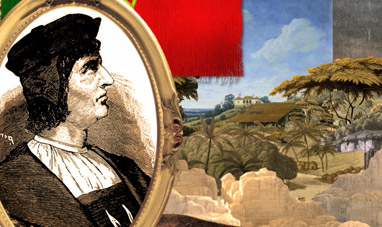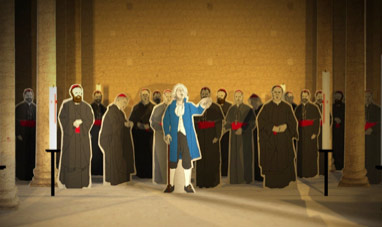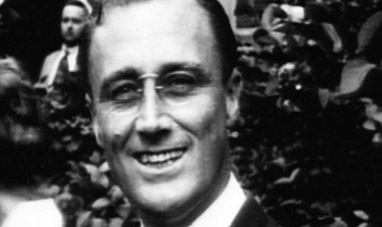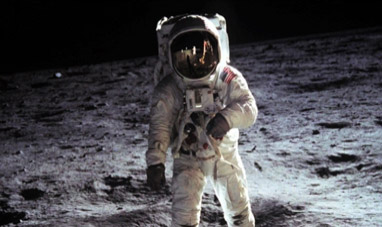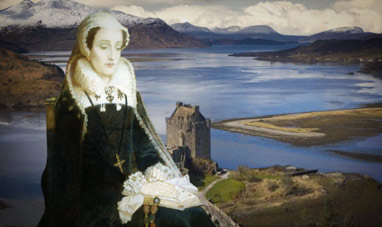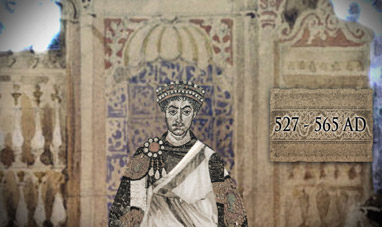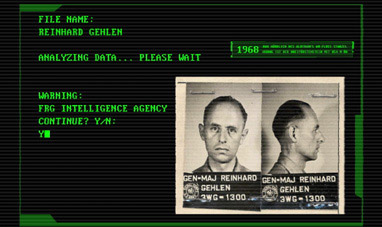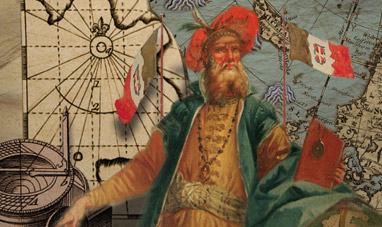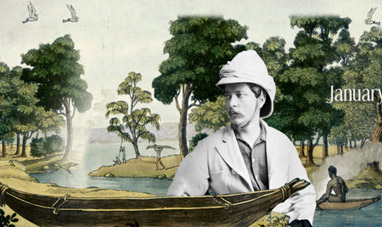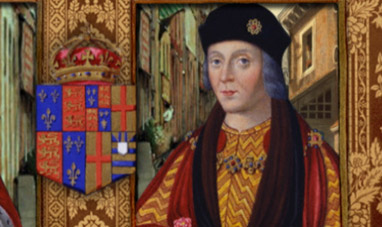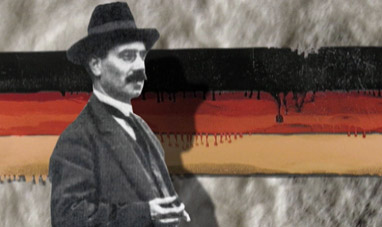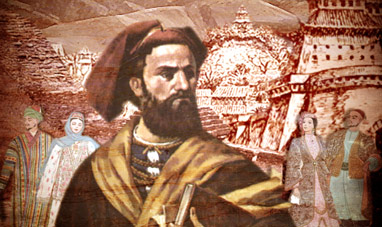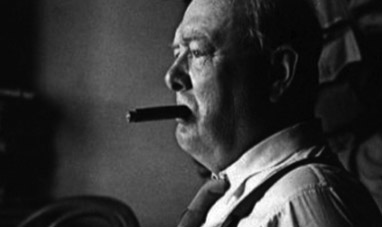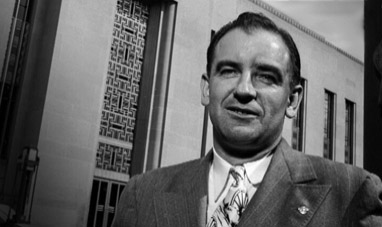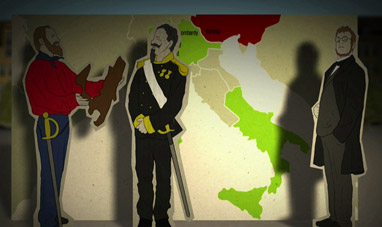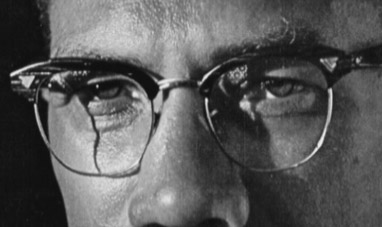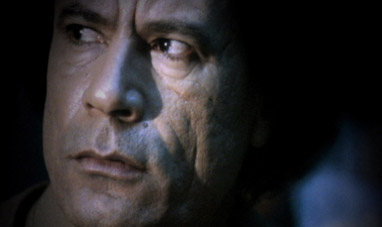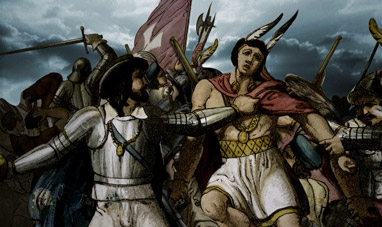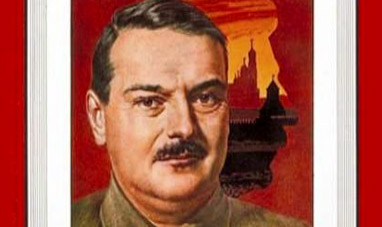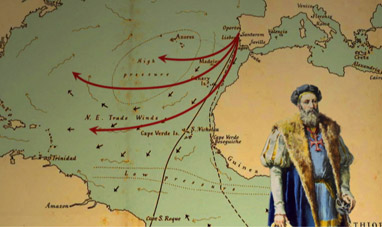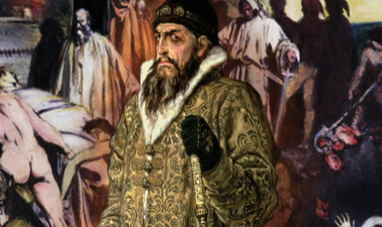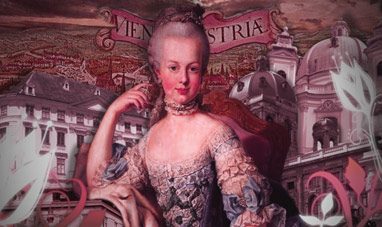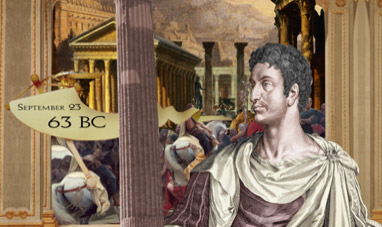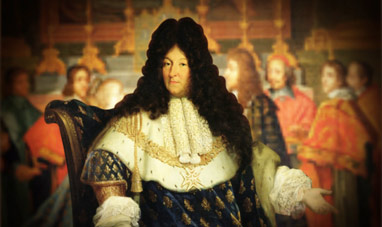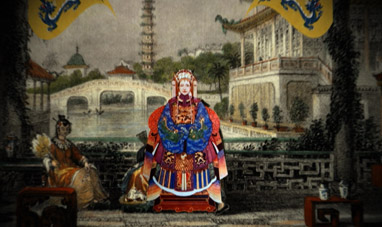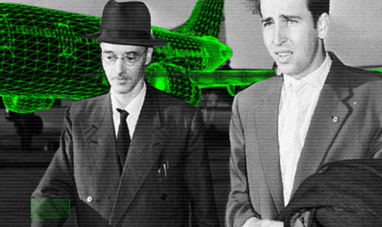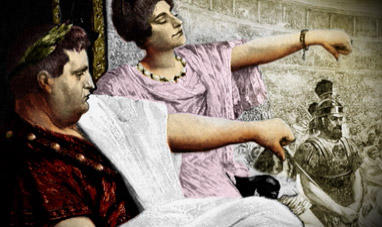Francis Drake was a 16th-century English navigator and corsair. With his help, England initiated an era of colonial conquest.
Francis was born in the English county of Devon around 1540, the son of Edmund Drake, a farmer and protestant preacher.
He set sail aboard his first merchant vessel when he was 13. He participated in moneymaking expeditions to Guinea, where black slaves were loaded onto ships and then sold in the American colonies. At the time, Spain ruled the seas. The English Crown did not have ships to match the Spanish fleet, and began employing adventurers. The Crown granted these merchant sailors “course licenses,” from which the name “corsair” is derived, that gave them the authority to attack and capture enemy ships.
Part of a corsair’s booty went to England, while he was allowed to keep the rest. This system enabled England to gather significant sums of money and undermine Spain’s maritime supremacy. Drake sacked every Spanish ship he encountered on the high seas. He was soon one of England’s foremost corsairs, and one of the most feared enemies of Spanish ships. Queen Elizabeth I appreciated Drake’s courage and approved of his initiatives. She commissioned him to undertake a daring quest: to circumnavigate the globe. Drake had to trace new routes, different from those already controlled by Spain. In 1577 Drake sailed from the English port of Plymouth with five ships and more than 150 men. He headed for the Americas and crossed the Strait of Magellan.
From here he sailed up the western coast of the American continent, sacking every Spanish ship he encountered. He founded New Albion, the first English colony north of what is known today as San Francisco, California.
He then crossed the Pacific Ocean to berth at the Maluku Islands, east of Indonesia. From there he headed for Africa, where he rounded the Cape of Good Hope and set sail for his homeland. In 1580, after having endured three years of storms and mutinies, Drake returned to England triumphant. Of the 150 seamen who originally set sail with him, only 30 sailors remained, but they were all very rich thanks to the raids made during the journey. The exploit brought roughly 600,000 pounds into the English coffers. The Queen rewarded Drake by knighting him. In 1581 he became Mayor of Plymouth. Later he became a member of England’s House of Commons. When war broke out in 1585 between Spain and England, Drake returned to the front line. In 1587 he attacked and destroyed the Spanish fleet moored in the Port of Cadiz, ready to sail for England. Spain was forced to postpone its invasion. After Cadiz, the Spanish named Drake El Draque, the dragon. In 1588 Philip II of Spain reorganized his armada and sent it to conquer England. As vice-admiral of the English navy, Sir Francis Drake helped destroy the Spanish fleet known as the Invincible Armada.
Francis Drake fell ill and died on January 28, 1596, while sailing near Panama. He was buried at sea in a lead coffin, and given all the honors afforded a hero.
Francis was born in the English county of Devon around 1540, the son of Edmund Drake, a farmer and protestant preacher.
He set sail aboard his first merchant vessel when he was 13. He participated in moneymaking expeditions to Guinea, where black slaves were loaded onto ships and then sold in the American colonies. At the time, Spain ruled the seas. The English Crown did not have ships to match the Spanish fleet, and began employing adventurers. The Crown granted these merchant sailors “course licenses,” from which the name “corsair” is derived, that gave them the authority to attack and capture enemy ships.
Part of a corsair’s booty went to England, while he was allowed to keep the rest. This system enabled England to gather significant sums of money and undermine Spain’s maritime supremacy. Drake sacked every Spanish ship he encountered on the high seas. He was soon one of England’s foremost corsairs, and one of the most feared enemies of Spanish ships. Queen Elizabeth I appreciated Drake’s courage and approved of his initiatives. She commissioned him to undertake a daring quest: to circumnavigate the globe. Drake had to trace new routes, different from those already controlled by Spain. In 1577 Drake sailed from the English port of Plymouth with five ships and more than 150 men. He headed for the Americas and crossed the Strait of Magellan.
From here he sailed up the western coast of the American continent, sacking every Spanish ship he encountered. He founded New Albion, the first English colony north of what is known today as San Francisco, California.
He then crossed the Pacific Ocean to berth at the Maluku Islands, east of Indonesia. From there he headed for Africa, where he rounded the Cape of Good Hope and set sail for his homeland. In 1580, after having endured three years of storms and mutinies, Drake returned to England triumphant. Of the 150 seamen who originally set sail with him, only 30 sailors remained, but they were all very rich thanks to the raids made during the journey. The exploit brought roughly 600,000 pounds into the English coffers. The Queen rewarded Drake by knighting him. In 1581 he became Mayor of Plymouth. Later he became a member of England’s House of Commons. When war broke out in 1585 between Spain and England, Drake returned to the front line. In 1587 he attacked and destroyed the Spanish fleet moored in the Port of Cadiz, ready to sail for England. Spain was forced to postpone its invasion. After Cadiz, the Spanish named Drake El Draque, the dragon. In 1588 Philip II of Spain reorganized his armada and sent it to conquer England. As vice-admiral of the English navy, Sir Francis Drake helped destroy the Spanish fleet known as the Invincible Armada.
Francis Drake fell ill and died on January 28, 1596, while sailing near Panama. He was buried at sea in a lead coffin, and given all the honors afforded a hero.



